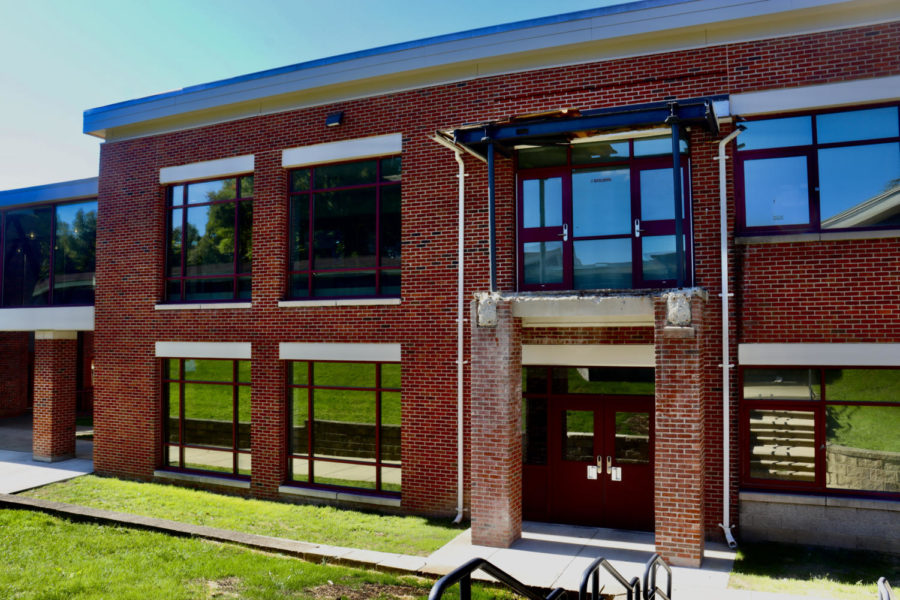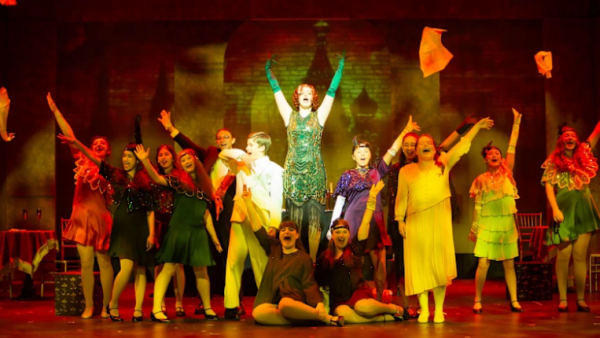A Bridge Not Far Enough
Greeley students adapt to the loss of J-Bridge
The remnants of J-Bridge.
You’ve seen it — we all have. You’re walking into school, on your way to a class in upper L. You open the first door, and then the second, only to see it — or, rather, not see it. J-Bridge, as you remember it from years past, is gone. This iconic fixture of traffic and congestion, this embodiment of the hustle and bustle of Greeley life, stands no more. We’ve all wondered what happened to the beloved J-Bridge. Where did it go? Why isn’t it here anymore? We may have resigned ourselves to the certainty that these questions would forever go unanswered. Until now, that is. The Greeley Voice has the inside scoop on the fate of J-Bridge, and the details concerning its recent fall from grace.
J-Bridge’s absence was a surprise to just about everyone. Its absence readjusted the flow of traffic throughout Greeley and made navigating school life a bit more difficult for sophomores, juniors, and seniors.
Many were shocked — Senior Sam T., Greeley’s student body president, arrived at school in late August and was blown away. “What happened?” he asked Mr. Corsilia, the principal at the time. As Sam recalls from his conversation with Mr. Corsilia, “[Around spring time] last year…an engineer took a look at J-Bridge and found that it was structurally unstable.” The cement was deteriorating, mostly due to the fact that J-Bridge was older than J-Building.. At that time, this wasn’t a pressing concern; while the bridge wasn’t in tip-top shape, it did not pose any direct risk to student safety. However, over the summer, that same engineer gave it a more thorough inspection, issuing the final verdict: “This thing is so structurally unstable, I’m not comfortable having people even walk on it.” Thus, down it went: J-Bridge was unceremoniously sawed apart and disposed of, with pictures of the process documented on the Welcome Back to School video released by the district this fall. The bridge, previously graced by the steps of thousands of students, was carted off in pieces to a dumpster. A wall now covers the door that linked J-Bridge to J Building; a metal fence bars students from walking off the stone platform that remains by the iLab.
Financial woes purportedly bear the blame for the current absence of a replacement. Mr. Corsilia cited a lack of both time and money — there simply weren’t enough funds to build a new bridge fast enough, and not enough time to do so in an affordable manner. Accordingly, the rebuilding of J-Bridge is included in the facilities improvement plan provided by the district for the 2023 year and hopes are high that students might get to see a new J-Bridge come next fall. That being said, the J-Bridge of the future, according to Corsilia, is likely to bear a resemblance to the open-sided J-Bridge of the past. It’ll be “a similar structure… as an enclosed bridge [like the one between J and L] would be exceptionally expensive”. However, that’s all contingent on the passing of the budget upgrade. If it isn’t approved, Corsilia warns that it “might take longer if it came out of the normal operating budget…there’s a lot of stuff that needs to be finished first.” With the time needed to reinstate the bridge, there’s no guarantee that current juniors will be acquainted with a replacement during their high school career.
Until then, Greeley is going to have to cope with the loss of this pillar of the community and, though nobody has walked into the wall quite yet (publicly, at least), the loss of the bridge has certainly made it “more difficult to get to classes on time,” according to Sam. While the bridge was blocked off late last year, Corsilia notes that “a quarter of the students weren’t here” as the absence of those on their senior experience blunted the blow of the roadblock. Only now that the entire student body has returned to campus does the absence of J-Bridge demonstrate just how integral it was. Hallway traffic is as bad as it’s ever been, with the connection between the courtyard and J building redirected through Lower L, K building, and the iLab. A positive (or negative, depending on which way your glass fills) side effect of the ordeal — we’ve all been forced to map out new routes from class to class. For freshmen, of course, this is something of a moot point. Suffice it to say that it used to be a lot easier to get to classes, until, as Senior John F. eloquently put it, “we blew up a bridge.”


